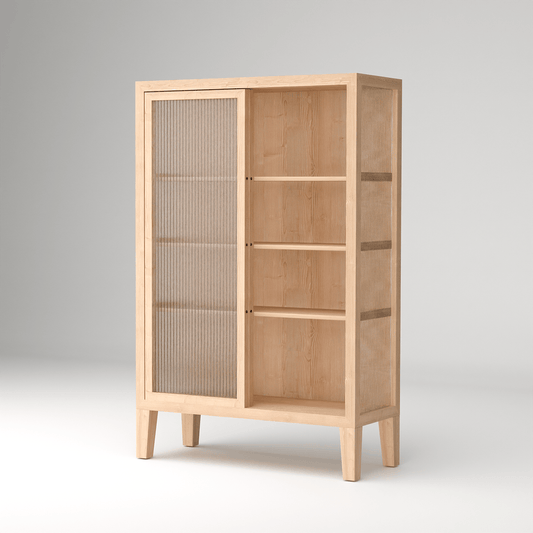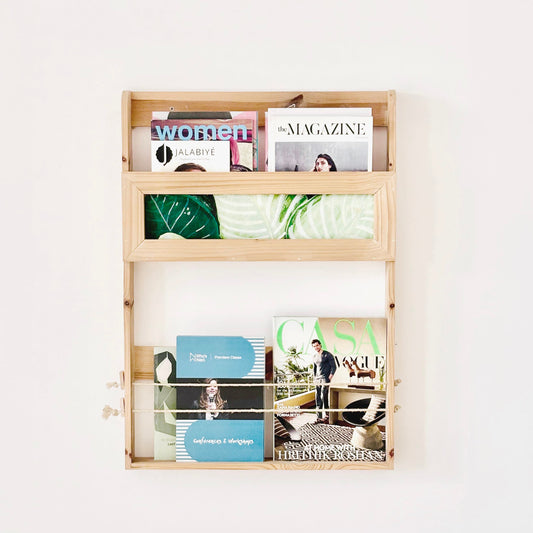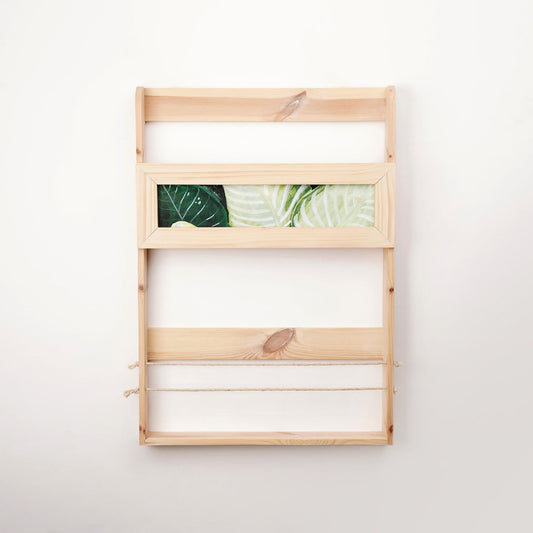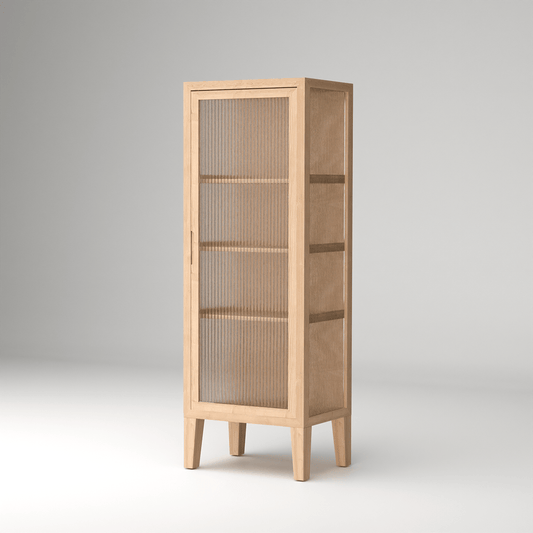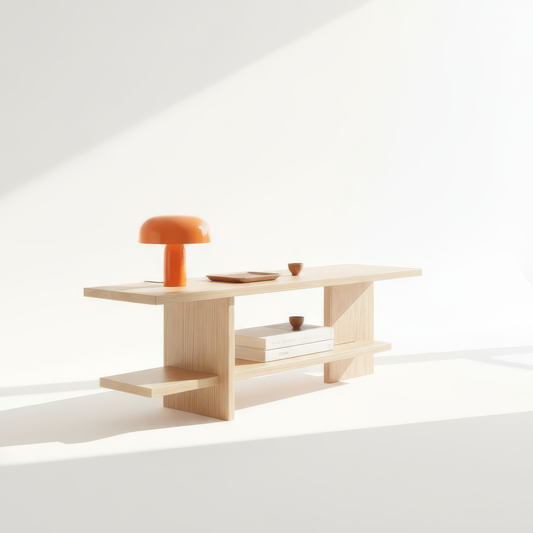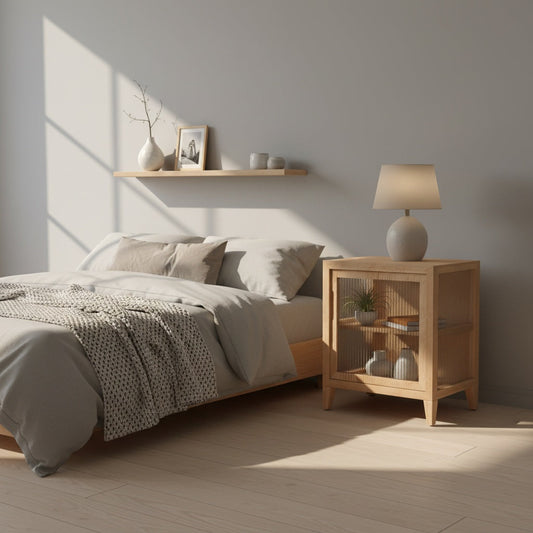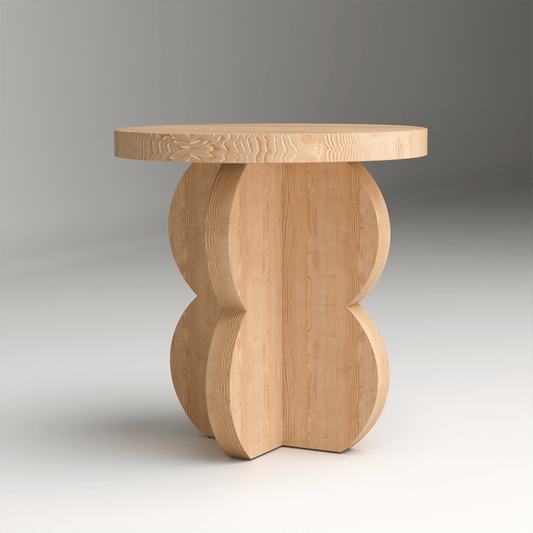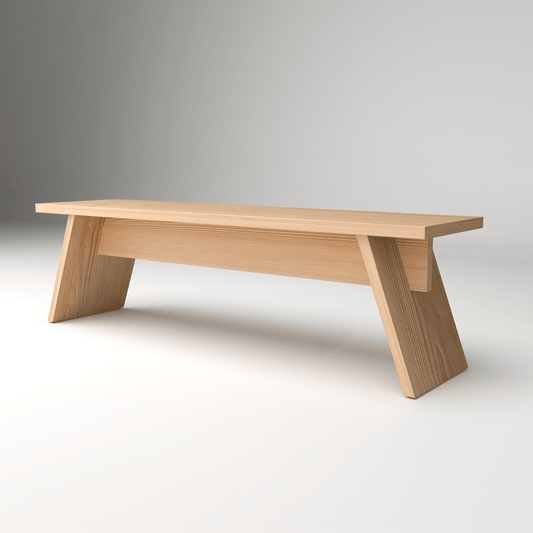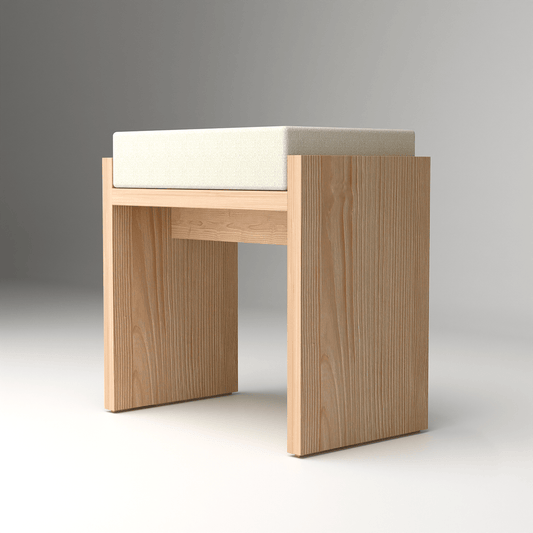The Scandinavian design landscape of 2025 is witnessing a remarkable transformation as warm woods take center stage, fundamentally changing how we experience Nordic interiors. This shift from the cool, bleached woods that once dominated Scandinavian aesthetics represents more than a trend—it's a return to the authentic, natural beauty that originally inspired the movement while embracing contemporary understanding of how materials impact our emotional and physical well-being.
At A Good Life, we've been pioneers in this warm wood revolution, crafting furniture from sustainable pine that celebrates the natural grain, character marks, and inherent warmth that make each piece unique. Our commitment to showcasing wood in its authentic state reflects the broader 2025 movement toward materials that tell stories and create genuine connections between people and their living spaces.
Understanding the Warm Wood Revolution
The shift toward warm woods in Scandinavian design represents a fundamental philosophical change in how we approach natural materials and their role in creating comfortable, nurturing environments.
From Cool to Warm: The Material Evolution
Traditional Scandinavian design often featured woods that were bleached, painted, or treated to achieve uniform, cool tones that emphasized the movement's minimalist aesthetic. The 2025 evolution embraces the opposite approach—celebrating the natural warmth, variation, and character that make each piece of wood unique.
This transformation reflects several key cultural shifts:
-
Authenticity over perfection: Embracing natural variations rather than hiding them
-
Sustainability consciousness: Appreciating materials in their natural state reduces processing and environmental impact
-
Wellness awareness: Understanding how warm materials positively impact mood and stress levels
-
Craftsmanship appreciation: Recognizing the beauty of traditional woodworking techniques
The Psychology of Warm Woods
Scientific research has revealed the profound psychological impact that wood tones have on human well-being:
-
Stress reduction: Warm wood tones lower cortisol levels and promote relaxation
-
Cognitive performance: Natural wood environments improve focus and mental clarity
-
Emotional comfort: Warm materials create feelings of safety and nurturing
-
Social connection: Warm wood environments encourage gathering and conversation
-
Sleep quality: Bedrooms with warm wood elements support better rest and recovery
Pine Wood: Leading the Warm Revolution
Pine wood has emerged as the champion of the warm wood movement, offering unique characteristics that perfectly align with 2025 Scandinavian design principles.
Why Pine Dominates Warm Scandinavian Design
Natural Warmth: Pine's inherent golden and honey tones provide immediate visual and psychological warmth.
Grain Character: The distinctive grain patterns of pine create visual interest while maintaining the clean aesthetic essential to Scandinavian design.
Sustainability: Pine's fast growth rate and renewable nature align with environmental consciousness.
Workability: Pine's softness makes it ideal for handcrafted furniture that showcases traditional joinery techniques.
Aging Beauty: Pine develops rich patina over time, becoming more beautiful with age and use.
Our Minimalist Pinewood Air Console Table exemplifies the warm wood revolution, showcasing pine's natural beauty through clean, contemporary lines. This piece demonstrates how warm woods can maintain Scandinavian minimalism while adding the emotional warmth that makes spaces feel truly welcoming.
Color Harmony: Integrating Warm Woods
Successfully incorporating warm woods into Scandinavian interiors requires understanding how these materials interact with other design elements.
Warm Wood Color Coordination
Neutral Foundations: Warm whites, soft creams, and gentle beiges that complement rather than compete with wood tones.
Earth Tone Accents: Muted terracotta, sage green, and dusty rose that echo the natural colors found in wood grain.
Textile Integration: Natural linen, wool, and cotton in tones that harmonize with wood warmth.
Metal Accents: Brass, copper, and warm-toned metals that enhance rather than cool the overall palette.
Balancing Warm and Cool Elements
The key to successful warm wood integration lies in achieving balance:
-
Use cool elements sparingly to prevent overwhelming warmth
-
Incorporate natural light to showcase wood's natural variations
-
Balance different wood tones to create depth without chaos
-
Layer textures to add interest while maintaining harmony
-
Consider seasonal adjustments to maintain optimal comfort
Furniture Design: Showcasing Wood Character
2025 Scandinavian furniture design celebrates rather than hides the natural characteristics that make each piece of wood unique.
Character-Celebrating Design Principles
Grain Emphasis: Furniture designs that showcase rather than disguise natural wood grain patterns.
Knot Integration: Embracing knots and natural imperfections as design features rather than flaws.
Edge Celebration: Live edges and natural wood edges that connect furniture to its tree origins.
Surface Variety: Mixing smooth and textured surfaces to highlight wood's natural diversity.
Joinery Visibility: Traditional joinery techniques that become decorative elements while ensuring structural integrity.
For seating that celebrates warm wood character, consider our Wabi-Sabi Wooden Stool with Cushion. This piece embodies the warm wood philosophy by celebrating natural imperfections and grain variations while providing comfortable seating that invites daily use and appreciation.
Lighting Design for Warm Woods
Proper lighting is crucial for showcasing the beauty of warm woods and creating the cozy atmosphere they naturally support.
Warm Wood Lighting Strategies
Warm Color Temperatures: 2700K-3000K lighting that enhances rather than cools wood tones.
Directional Lighting: Side lighting and grazing light that emphasizes wood grain and texture.
Natural Light Optimization: Strategic placement that allows daylight to showcase wood's natural variations throughout the day.
Layered Illumination: Multiple light sources that create depth and highlight different aspects of wood character.
Candle Integration: The irreplaceable warmth of flickering flame light that perfectly complements warm wood tones.
Seasonal Adaptations with Warm Woods
Warm woods provide an excellent foundation for seasonal design adaptations that maintain year-round comfort and visual interest.
Seasonal Warm Wood Styling
Winter Enhancement: Deeper textiles and richer colors that complement wood warmth during darker months.
Spring Freshening: Lighter textiles and fresh green accents that celebrate wood's connection to living trees.
Summer Balance: Minimal styling that allows wood's natural beauty to shine without additional warmth.
Autumn Harmony: Rich, harvest-inspired colors that echo the seasonal changes in wood's source forests.
Maintenance and Care for Warm Woods
Preserving the beauty of warm woods requires understanding proper care techniques that maintain their character while ensuring longevity.
Warm Wood Care Principles
Natural Cleaning: Using gentle, natural cleaning methods that preserve wood's natural oils and character.
Oil Treatments: Periodic application of natural oils that enhance wood grain while providing protection.
Humidity Management: Maintaining appropriate humidity levels that prevent cracking while avoiding excessive moisture.
Sun Protection: Strategic placement and window treatments that prevent excessive UV exposure while allowing beneficial natural light.
Character Preservation: Embracing the natural aging process while protecting against damage.
Sustainable Sourcing of Warm Woods
The 2025 emphasis on warm woods aligns perfectly with sustainable forestry practices and environmental responsibility.
Sustainable Warm Wood Practices
Responsible Forestry: Sourcing from forests managed for long-term health and regeneration.
Local Materials: Prioritizing locally sourced woods that reduce transportation impact.
Reclaimed Integration: Using reclaimed woods that add character while reducing environmental impact.
Waste Reduction: Utilizing wood waste and off-cuts in creative ways that minimize disposal.
Carbon Consideration: Understanding the carbon storage benefits of wood products versus synthetic alternatives.
Technology Integration with Warm Woods
Modern technology can be thoughtfully integrated with warm woods without disrupting their natural beauty or the cozy atmosphere they create.
Tech-Wood Integration Strategies
Hidden Infrastructure: Concealing cables and charging stations within warm wood furniture designs.
Smart Integration: Incorporating smart home technology that enhances comfort without visible complexity.
Climate Control: Automated systems that maintain optimal conditions for both human comfort and wood preservation.
Lighting Automation: Smart lighting that adjusts throughout the day to showcase wood beauty while supporting circadian rhythms.
Cultural Significance of Warm Woods
The return to warm woods in Scandinavian design reflects deeper cultural values about authenticity, craftsmanship, and connection to nature.
Cultural Wood Values
Craft Tradition: Honoring traditional woodworking skills and techniques that connect us to cultural heritage.
Material Honesty: Celebrating materials in their natural state rather than disguising or altering them.
Slow Living: Embracing furniture that improves with age rather than following fast fashion trends.
Environmental Connection: Maintaining connection to forests and natural cycles through daily interaction with wood.
Community Support: Supporting local craftspeople and sustainable forestry practices.
Our Minimalist Pinewood Stand with Shelf represents these cultural values, combining traditional craftsmanship with contemporary design needs. This piece showcases pine's natural warmth while providing practical storage and display solutions that support modern living.
The Future of Warm Woods in Design
Looking beyond 2025, the warm wood movement will likely continue evolving while maintaining its core emphasis on natural beauty and environmental responsibility.
Emerging Warm Wood Trends
Regional Variations: Increased use of locally specific wood species that reflect geographic identity.
Hybrid Materials: Thoughtful combination of warm woods with other sustainable materials.
Advanced Treatments: New natural treatments that enhance wood character while improving durability.
Restoration Focus: Increased emphasis on restoring and refinishing existing wood furniture rather than replacement.
Biophilic Integration: Deeper integration of wood elements that support human connection to nature.
Implementation Guide for Warm Wood Integration
Successfully incorporating warm woods into Scandinavian interiors requires strategic planning and gradual implementation.
Warm Wood Integration Strategy
Assessment Phase: Evaluate existing spaces for warm wood compatibility and opportunities.
Priority Planning: Identify which warm wood additions will have the greatest impact on comfort and atmosphere.
Quality Investment: Choose pieces that showcase excellent craftsmanship and will develop beautiful patina over time.
Gradual Introduction: Implement warm wood elements over time to allow for adjustment and refinement.
Professional Guidance: Consider working with craftspeople who understand both traditional techniques and contemporary design needs.
The rise of warm woods in Scandinavian design 2025 represents a return to the movement's authentic roots while embracing contemporary understanding of how materials impact our well-being. By celebrating the natural beauty, character, and warmth of woods like pine, we create spaces that are not just visually appealing but emotionally nurturing.
This warm wood revolution acknowledges that our homes should engage all our senses, providing not just visual beauty but tactile pleasure and emotional comfort that supports our daily well-being. As Scandinavian design continues to evolve, this appreciation for natural materials in their authentic state will remain one of its most important characteristics, ensuring that our living spaces truly embody the warmth and comfort essential to the good life.


